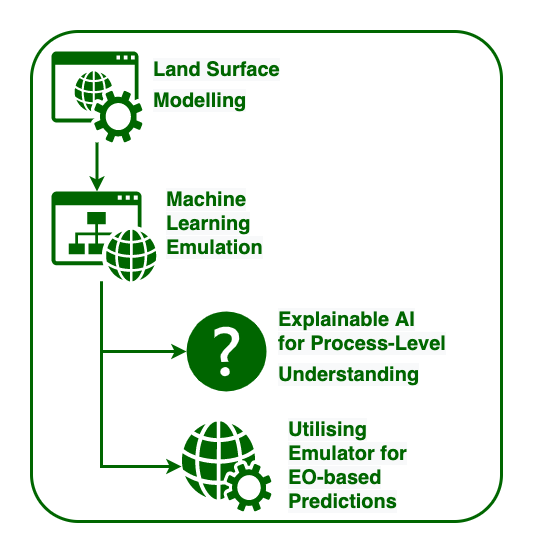In this ESA project, we will explore whether machine-earning based emulators are capable of not only reproducing European carbon fluxes from the JULES land surface model but going beyond this and providing a means to derive a novel observation-driven dataset of GPP, built on the existing process-level understanding within the model.
Question 1
How well can machine learning methods emulate physical process-based land surface models, focused over Europe?
Question 2
Can explainable AI techniques provide new insights into process understanding when combining land surface models and Earth Observation data?
Question 3
Are the learnt relationships between the modelled inputs and outputs consistent with those from Earth Observation data?
 In order to answer the above questions, we will undertake the following activities:
In order to answer the above questions, we will undertake the following activities:
- We will produce land surface model simulations from JULES over Europe for a range of terrestrial essential climate variables.
- We will develop, train and evaluate machine learning models against the simulated land surface parameters, providing the capability to successfully emulate the complex physical process-based models.
- These emulators will be used to investigate the complex emergent relationships and feedbacks inherent in such simulations to gain an increased understanding of the underlying Earth System processes.
- We will use these emulators to test whether data from satellite-based essential climate variables (e.g. ESA-CCI) are consistent with the relationships learnt from the land surface models.
- We will produce an Emulated-GPP (gross primary productivity) data product based on EO data, using the relationships learnt from the land surface model.


